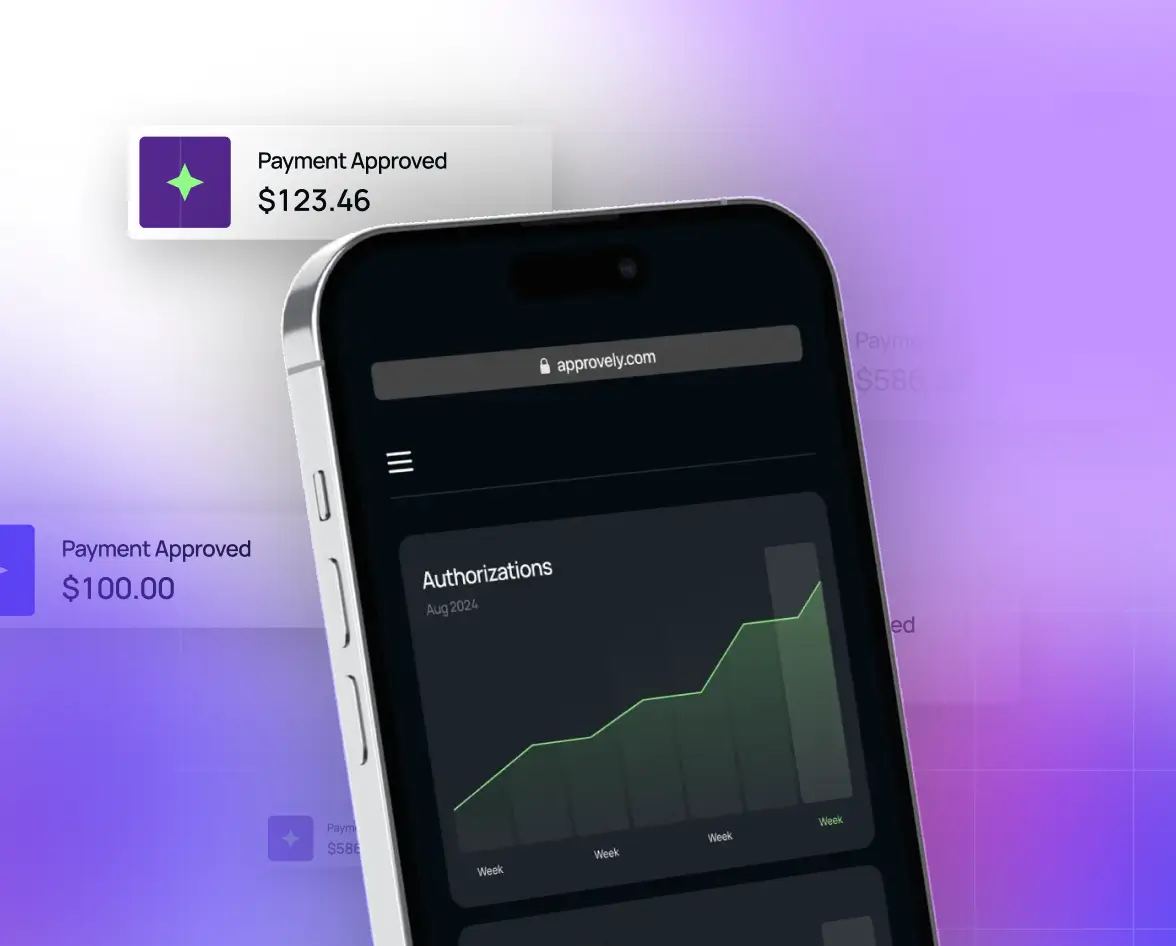BLOG
>
Insights
Improve Your Payment Success: A Deep Dive into Authorization Rates

.svg)
In iGaming, even a 1–2% improvement in your authorization rate can mean a massive lift in both revenue and player satisfaction. Whether you run an online casino, sportsbook, or skill-based gaming platform, higher authorization rates mean:
- More successful deposits and transactions
- Happier players with less friction
- Increased lifetime revenue per customer
But hitting those higher benchmarks isn’t always simple. MCC 7995 (the merchant category code for gambling and gaming) automatically places iGaming transactions under stricter scrutiny by issuing banks. Combine this with elevated fraud risk in the industry, and you’ve got a recipe for more declines than most other sectors face.
In this guide, we’ll take a detailed look at why authorization rates matter, what benchmarks to aim for, what’s causing so many declines, and most importantly, the strategies you can use to improve approvals across regions and payment methods.
What Are Authorization Rates and Why Do They Matter?
Your authorization rate is the percentage of attempted payments that get approved by issuers. Think of it as the conversion rate for your checkout process.
If 100 players attempt a deposit and 80 succeed, your authorization rate is 80%.
That number directly impacts:
- Conversion rates: If players can’t deposit, they can’t play.
- Revenue optimization: Every failed authorization is lost revenue.
- User experience: Players are far less likely to return if their card is declined.
Industry benchmarks suggest:
- 80%+ = healthy baseline for most iGaming businesses
- 90%+ = optimal for low-value, high-frequency deposits, where friction must be minimal
- 75–80% = acceptable for high-value transactions where stricter fraud checks are expected
The takeaway is: the higher your authorization rate, the more profitable and user-friendly your platform becomes.
How Authorization Rates Vary by Region
Because iGaming is a global industry, your approval rates will look very different depending on where your players are located.
These numbers highlight two things:
- Local regulations matter. Markets like LATAM and Africa often face more friction due to stricter compliance checks and limited issuer trust in MCC 7995.
- Localization is key. Merchants that route transactions through local acquirers or offer alternative payment methods (APMs) often outperform those relying solely on international card processing.
Common Causes of Payment Declines in iGaming
A large percentage of failed payments are network declines, meaning the decision comes from the issuing bank rather than the payment gateway or the player.
Some of the most frequent causes include:
- Insufficient funds: The cardholder doesn’t have enough balance to complete the transaction.
- Incorrect or outdated card details: Expired cards, wrong CVV, or incorrect billing info.
- Suspected fraud: Banks flag unusual patterns or high-risk categories like gaming.
- Geo-blocked or unsupported cards: Some issuers block MCC 7995 entirely or restrict it by region.
Because issuers tend to err on the side of caution with iGaming, even legitimate players can face false declines; hurting your business and frustrating your customers.
.webp)
.webp)
How to Improve Authorization Rates
Boosting authorization rates requires a mix of technical optimization, fraud management, and smart localization. Here’s a detailed playbook:
1. Optimize Payment Routing
Routing plays a huge role in approvals. Instead of sending every transaction to the same acquirer, use smart routing to:
- Direct transactions to acquirers with stronger regional approval performance
- Route retries through a different acquirer for better success rates
- Work with local acquiring banks wherever possible
Example: A UK player may see higher success rates with a UK acquirer than with a global PSP.
2. Improve Data Quality & Checkout Experience
More complete and accurate data helps issuers approve transactions faster. Focus on:
- Collecting full billing details: AVS, CVV, and postal code
- Using network tokens and account updater services to avoid declines from expired cards
- Encouraging digital wallets (Apple Pay, Google Pay, PayPal), which generally see higher authorization rates
- Leveraging 3D Secure (3DS) only when required, using exemptions where possible to reduce friction
Tip: Even small UX tweaks like making error messages clearer can reduce drop-offs after a failed attempt.
3. Strengthen Your Fraud Prevention Strategy
Fraud controls and authorization rates go hand-in-hand. Issuers look at your merchant reputation when deciding whether to approve.
- Maintain low chargeback and fraud ratios to protect your standing with banks
- Use AI-driven fraud tools to distinguish good customers from suspicious activity
- Implement dynamic fraud rules that adapt by region, payment type, and player profile
A repeat VIP customer with a strong transaction history should not be treated the same as a first-time depositor.
4. Handle Declines More Intelligently
Not all declines should be treated equally. By tailoring your response to the decline reason, you can recover more transactions.
Merchants who build automated retry logic often see authorization rates rise 2–3 percentage points with no additional risk.
5. Understand User Behavior
Your player base isn’t one-size-fits-all. Segment customers and analyze behavior:
- High-value players (VIPs): Consider alternative routing or priority support for failed payments
- Retry patterns: Identify who never retries after a failed deposit and offer tailored nudges
- Issuer-specific trends: Track which banks are declining more often and adapt routing accordingly
Example: If a specific bank declines 40% of transactions, route those players through a different method.
6. Localize Your Payment Strategy
Finally, one of the most powerful levers is localization:
- Offer regional payment methods like PIX in Brazil, UPI in India, or Interac in Canada
- Support local currencies to avoid unnecessary FX friction
- Stay compliant with local KYC/AML regulations, which issuers factor into approval decisions
The more “native” your payments feel, the higher the trust from both issuers and players.
The Business Impact of Better Authorization Rates
For high-volume iGaming platforms, even a 1–2% lift in authorization rates can equal millions in annual revenue. It’s not just about more deposits, it’s about:
- Higher player lifetime value (LTV): Fewer failed payments mean players stay engaged longer.
- Stronger brand trust: Players frustrated with failed deposits will switch to competitors.
- Lower operational costs: Fewer failed payments mean fewer support tickets and less churn.
Key Takeaways
- Authorization rates in iGaming are often lower than in other industries due to MCC 7995 risk profiles.
- Benchmarks range from 90%+ in mature markets to 50–70% in emerging ones.
- The biggest levers are payment routing, fraud prevention, intelligent decline handling, and localization.
- Optimizing these factors can dramatically improve conversion, reduce churn, and drive revenue.
Need Expert Support?
If you’d like to review your current setup or understand your authorization metrics in context, our team is ready to help. Just get in touch, and we’ll walk through your payment performance together.


.svg)
.webp)

-min.avif)
-min.avif)